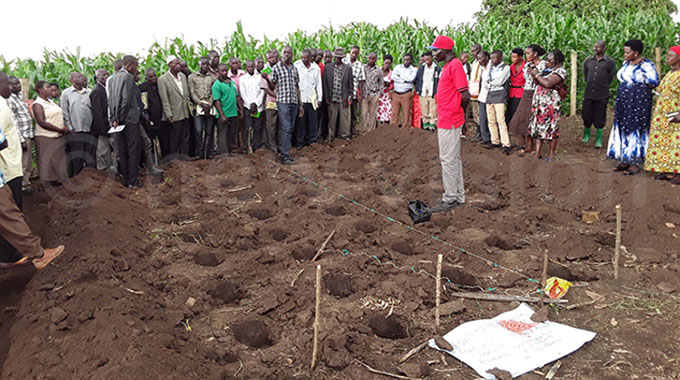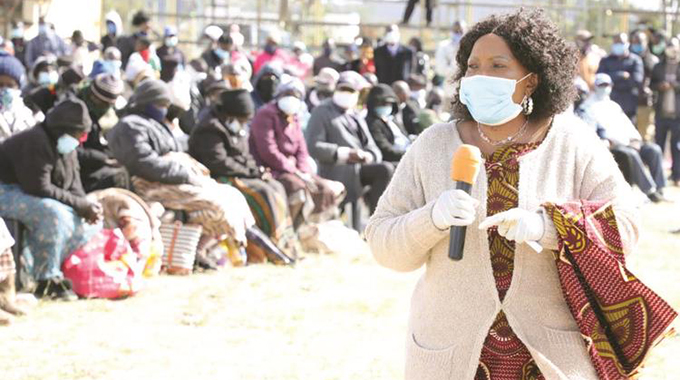Editorial Comment: Implementing support for agric sector laudable

The Government’s determination to ensure that agriculture is adequately strengthened to become a major driver of the country’s economic development is defined by a six-pronged strategy.
Emphasis in recent months has focused on encouraging growing of traditional crops as part of a deliberate measure to ensure greater production of the agricultural sector, and by extension, food security at both household and national levels.
The advantage of traditional crops is that they do well in almost all regions of Zimbabwe and that compared to maize, they have a lower risk of failure and do not require as much inputs during growth stages.
Critically, traditional grains have a longer post-harvest shelf life. It is partly for this reason that the Government is convinced promotion of traditional grains is key in ensuring food security, hence renewed and heightened emphasis on their production.
The second plank of the strategy has been the Pfumvudza programme. This approach emphasises intensification of crop production by concentrating resources such as inputs and labour on reduced size of land in order to ensure the most from the land, thus delivering increased productivity per unit area for higher returns, even in the face of drought.
Pfumvudza also seeks to ensure household and national food and nutritional security. As in traditional crops, Pfumvudza can be practised in marginal rainfall areas and yet still deliver higher yields.
What informs the Government’s approach to Pfumvudza is the belief that if smallholder farmers adopt this approach, it will ensure household food security, while large-scale farmers will produce for the Strategic Grain Reserve, and export markets.
The Pfumvudza programme targets more than 1 300 farmers and in excess of 1 100 agricultural extension officers. Accompanying this is procurement of inputs for the programme.
Pfumvudza is easily applicable in areas such as Mudzi, Matabeleland North, Masvingo, south of Manicaland and Rushinga, in Mashonaland Central province, among others.
The third pillar in the six-pronged strategy is Command Agriculture. Under this programme, the 2020/2021 summer cropping season targets productive farmers on irrigated and dry lands for production of maize, wheat, soya beans, traditional grains and sunflowers.
Command Agriculture in this case specifically seeks to boost maize production because it is the country’s staple food. Its success will translate to savings in foreign currency that would normally be required for food imports.
In the case of wheat, Command Agriculture is targeting 400 000 tonnes of the crop this year. If achieved, the production will exceed national demand by 15 000tonnes. The programme is administered under a financial services sector-led commercial contract farming model.
What informs the financial services contract farming model is that a 2017 analysis by the Ministry of Finance showed that Command Agriculture loan recoveries were at 66 percent, while Command Agriculture Revolving Fund registered repayments of US$47.4million in loan recoveries from farmers against an anticipated target of US$72 million.
The ministry noted that out of the 50 000 farmers contracted to produce maize under Command Agriculture, 33 percent fully paid their loan obligation, while 22 percent partially paid their obligation. Recoveries were made against deliveries to the Grain Marketing Board.
Then in recent weeks there was the launch of John Deere tractors scheme, where farmers who can demonstrate capacity to repay for the machinery through banks can access the agricultural equipment, enabling them to ramp up agricultural production, to the extent the country is not only self-sufficient, but is capable of exporting the excess production.
The scheme involves 1 300 tractors and 80 combine harvesters, adding to the existing equipment. One of the challenges that has hampered wheat production has been insufficient combine harvesters. The result has been that harvesting of winter wheat has been late, leading to losses that affect overall production.
Last week saw the distribution of the first batch of 500 motorbikes for agricultural extension officers. The programme earmarks 5 000 motorbikes, which will enable the extension officers to conduct their work more effectively, multiplying the number of farmers the extension officers can reach and advise.
This will increase their mobility and therefore be able to extend areas of their coverage. The results can only be improved yields and increased productivity.
While the motorbikes will be distributed to extension officers, some will be allocated to agricultural training colleges to enhance student training.
Last week also witnessed another Government initiative to ensure farmers have ready inputs. This is in the form of a facility for the importation of fertiliser duty-free ahead of the 2020/2021 agricultural season.
If these measures are properly pursued, and if they are guided by previous attempts at addressing the challenges faced by farmers in responding to calls to increase agricultural productivity, Zimbabwe will certainly be on the path to transforming its agricultural sector.
These are the measures that the Government has implemented since 2017. The sector, therefore, needs to demonstrate that it can rise to the challenge and set the country on the way to reclaiming its erstwhile status as the bread basket of the region.










Comments